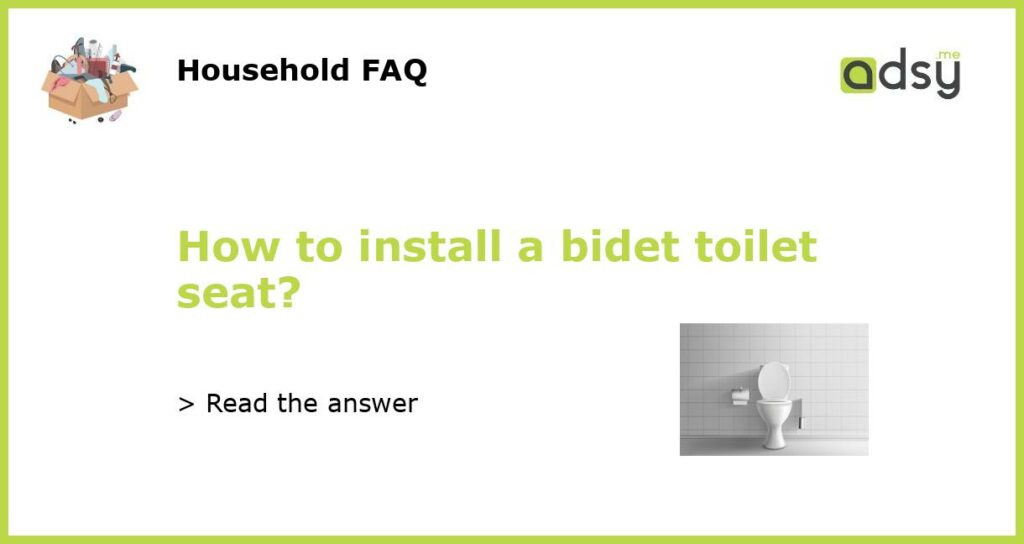Determine the Type of Bidet Toilet Seat
Before installing a bidet toilet seat, it’s important to determine which type will best fit your toilet. There are several types to choose from, including electric bidet seats, non-electric bidet seats, and handheld bidet sprayers. Each type has its own installation requirements and considerations.
Gather the Necessary Tools and Materials
Once you’ve determined the type of bidet toilet seat you want to install, gather the necessary tools and materials. This typically includes a screwdriver, adjustable wrench, plumber’s tape, and the bidet toilet seat itself. If you’re installing an electric bidet seat, you may also need an electrical outlet nearby.
Shut off the Water Supply
Before beginning the installation process, shut off the water supply to the toilet. This can typically be done by turning the shut-off valve, located behind the toilet, in a clockwise direction. Flush the toilet to drain any remaining water in the tank and bowl.
Remove the Existing Toilet Seat
To install a bidet toilet seat, you’ll need to remove the existing seat. Start by locating the bolts or screws that attach the seat to the toilet bowl. Use a screwdriver or adjustable wrench to remove these bolts, and then lift the seat off the toilet bowl. Set the old seat aside for disposal.
Install the Bidet Toilet Seat
Now it’s time to install the bidet toilet seat. Start by aligning the seat with the mounting holes on the toilet bowl. Depending on the type of bidet seat you’re installing, you may need to connect the seat to the water supply or electrical outlet. Refer to the manufacturer’s instructions for specific installation steps. Once the seat is aligned and connected, secure it in place using the provided hardware. Ensure a tight fit to prevent any leaks or wobbling.






